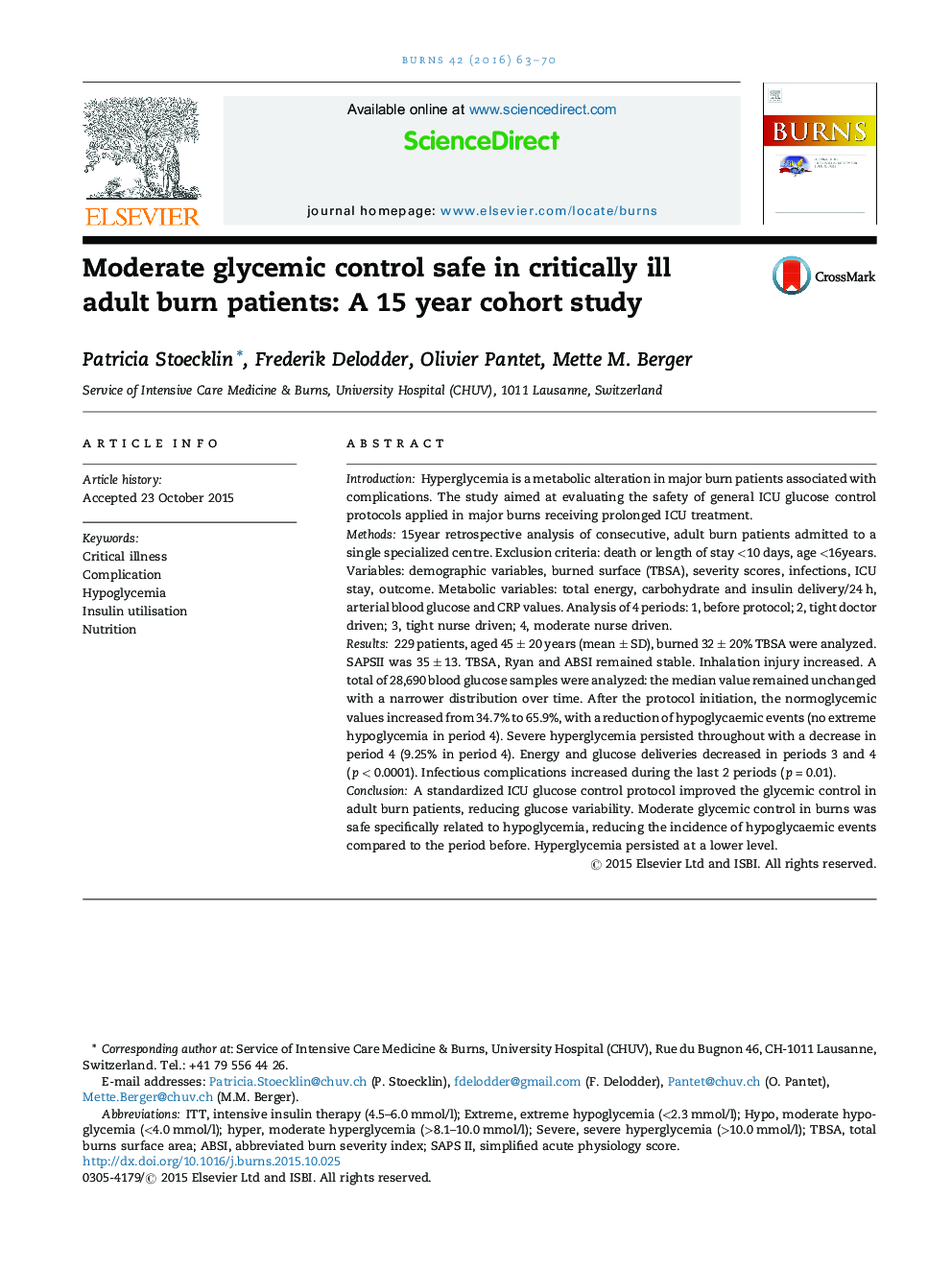| Article ID | Journal | Published Year | Pages | File Type |
|---|---|---|---|---|
| 3104173 | Burns | 2016 | 8 Pages |
•Moderate glycemic control by standardized protocol in adult burn patients was safe.•The protocol decreased hypoglycemia and reduced glucose variability.•A nurse driven protocol, compared to a physician guided, decreases rate of hypoglycaemia (%).•Hyperglycemia persisted inducing a multifactorial approach for better glucose control.•Reduction of energy delivery may favour infections and complicate glucose control.
IntroductionHyperglycemia is a metabolic alteration in major burn patients associated with complications. The study aimed at evaluating the safety of general ICU glucose control protocols applied in major burns receiving prolonged ICU treatment.Methods15year retrospective analysis of consecutive, adult burn patients admitted to a single specialized centre. Exclusion criteria: death or length of stay <10 days, age <16years. Variables: demographic variables, burned surface (TBSA), severity scores, infections, ICU stay, outcome. Metabolic variables: total energy, carbohydrate and insulin delivery/24 h, arterial blood glucose and CRP values. Analysis of 4 periods: 1, before protocol; 2, tight doctor driven; 3, tight nurse driven; 4, moderate nurse driven.Results229 patients, aged 45 ± 20 years (mean ± SD), burned 32 ± 20% TBSA were analyzed. SAPSII was 35 ± 13. TBSA, Ryan and ABSI remained stable. Inhalation injury increased. A total of 28,690 blood glucose samples were analyzed: the median value remained unchanged with a narrower distribution over time. After the protocol initiation, the normoglycemic values increased from 34.7% to 65.9%, with a reduction of hypoglycaemic events (no extreme hypoglycemia in period 4). Severe hyperglycemia persisted throughout with a decrease in period 4 (9.25% in period 4). Energy and glucose deliveries decreased in periods 3 and 4 (p < 0.0001). Infectious complications increased during the last 2 periods (p = 0.01).ConclusionA standardized ICU glucose control protocol improved the glycemic control in adult burn patients, reducing glucose variability. Moderate glycemic control in burns was safe specifically related to hypoglycemia, reducing the incidence of hypoglycaemic events compared to the period before. Hyperglycemia persisted at a lower level.
